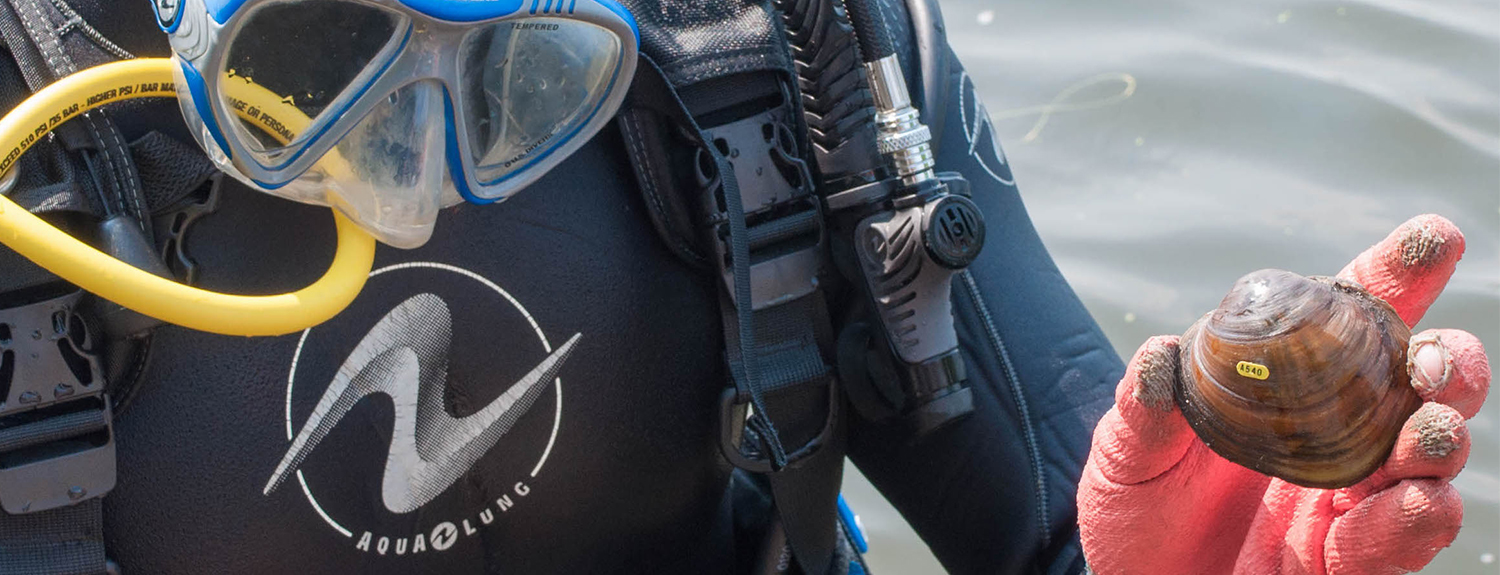
Sean Keogh
Research Q & A
What’s your hometown?
Plymouth, Minnesota.
What are you currently working on?
I am motivated to understand how variation in shell features of freshwater mussels aid in their survival and reproduction, specifically how morphological variation in different habitats (i.e. small creeks vs. large rivers) may be beneficial. Right now, I am quantifying morphological variation, including shell shape, thickness, size, and sculpture, across species as well as their habitat use to understand how morphological characters are distributed across the environment.
How did you get started/what drew you to your area of study?
When I was an undergrad studying conservation biology at Colorado State, I was an avid SCUBA diver in search of a summer job. So I searched ‘SCUBA’ into a natural resources job board and the first hit was a position to survey lakes and rivers of Minnesota for a group of animals called freshwater mussels. I didn’t know anything about freshwater mussels but I was excited by the prospect of getting paid to spend my summer underwater. I ended up working this position at the Minnesota DNR for three summers and became fascinated with the natural history of freshwater mussels.
How are you working towards that goals?
I have been sampling species shells using natural history collections, including the Bell’s Mollusk & Crustaceans collection, and the micro-ct scanner here at the University of Minnesota to digitally reconstruct species shells. I then use the scan data to quantify different morphological variables. I also leverage natural history collections to collect species-specific habitat use information.
Where are you working on research/field work?
Thankfully, this first part of my dissertation can largely be done from home or safely socially distanced in either the x-ray ct lab or the Bell’s mollusks and crustaceans collection. Future work investigating the function of morphological characters of freshwater mussels will take place in experimental flumes at the St. Anthony Falls Laboratory.



